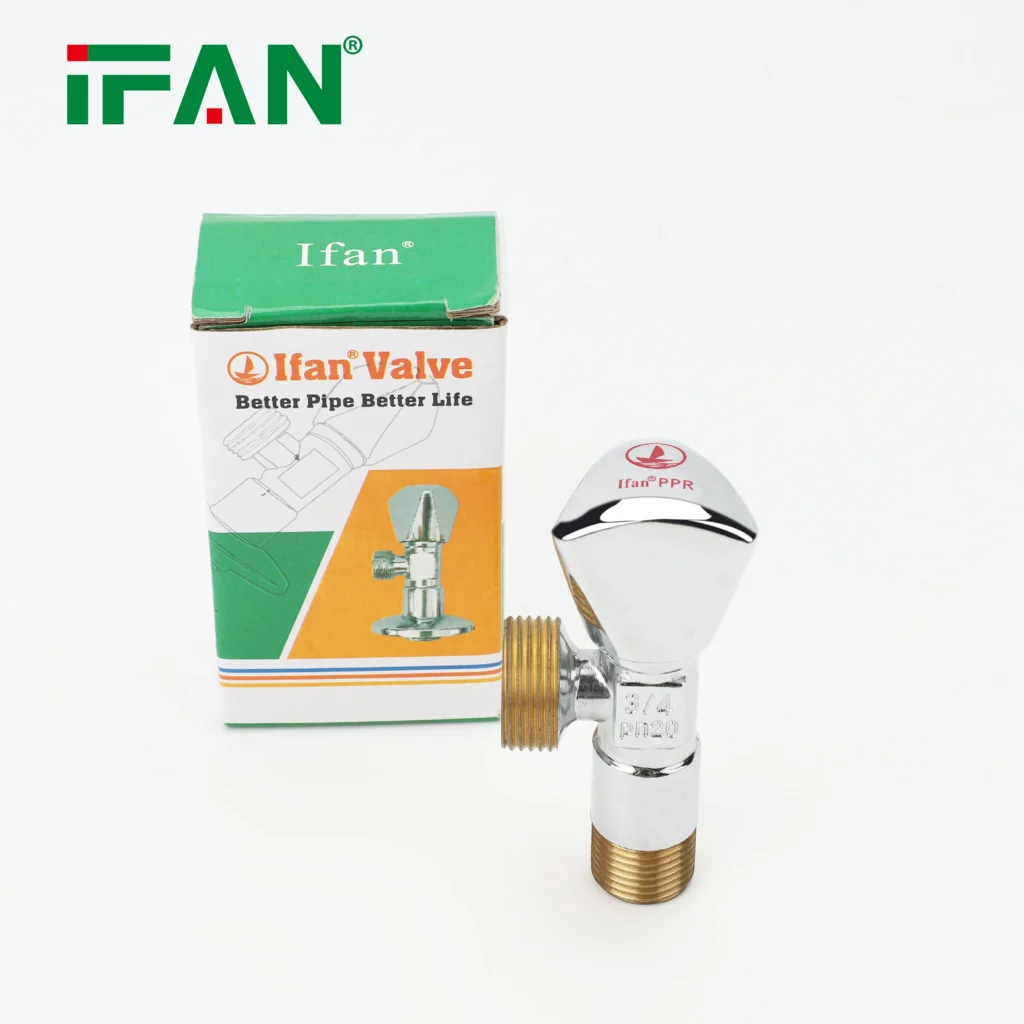Brass angle valves are essential components in both residential and commercial plumbing systems due to their durability, corrosion resistance, and precise flow control. Here’s a detailed breakdown of their common applications:
1. Residential Plumbing
A. Fixture Supply Lines
- Sinks (Kitchen & Bathroom):
- Connect between water supply pipes and faucet flex lines.
- Allow quick shut-off during repairs or faucet replacement.
- Toilets:
- Installed on the wall/floor water supply line to control flow to the toilet tank.
- Bidets:
- Isolate water supply for maintenance.
B. Appliances
- Washing Machines:
- Connect to hot/cold water hoses (typically ¾” threaded outlet).
- Dishwashers:
- Shut off water for filter cleaning or leak emergencies.
- Water Heaters:
- Used as isolation valves for inlet/outlet connections.
C. Outdoor & Utility Areas
- Garden Faucets:
- Control outdoor spigots to prevent freezing damage in winter.
- Water Softeners/Filter Systems:
- Isolate bypass loops during maintenance.
2. Commercial/Industrial Plumbing
A. HVAC Systems
- Boiler Feed Lines:
- Regulate water flow in heating systems (high-temperature rated valves required).
- Chilled Water Lines:
- Angle valves with PTFE seals prevent condensation leaks.
B. Food Service & Hospitals
- Lead-Free Brass Valves (NSF 61 Certified):
- Used in potable water systems for sinks, sterilizers, and medical equipment.
C. Industrial Machinery
- Coolant/Chemical Lines:
- DZR (Dezincification-Resistant) brass valves handle mild corrosive fluids.
3. Specialty Applications
- Aquariums/Water Features:
- Control water flow in recirculation systems.
- Gas Lines (if certified):
- Some brass angle valves meet EN 331 standards for low-pressure gas shut-off.
5. Why Brass?
- Durability: Resists scaling and high pressure (up to 600 PSI for industrial valves).
- Safety: Lead-free options comply with U.S. Safe Water Drinking Act.
- Heat Resistance: Handles hot water (up to 250°F/121°C) without deformation.
View more:https://www.ifanfittings.com/


